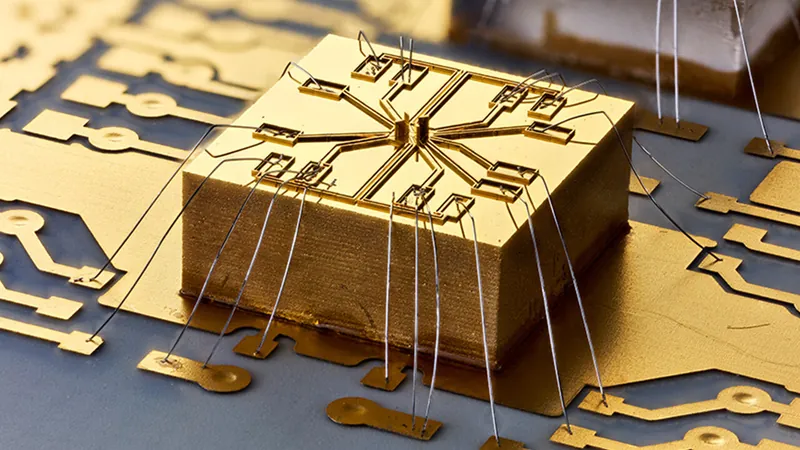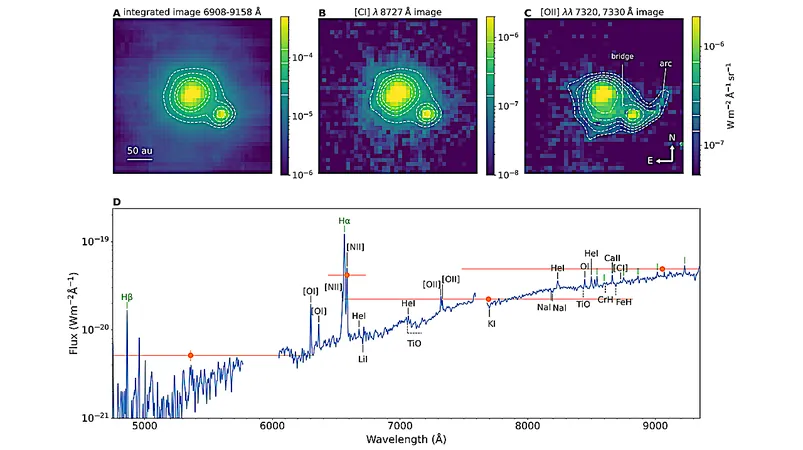
Revolutionizing Quantum Computing: Miniaturized Ion Traps Made with 3D Printing
2025-09-22
Author: Mei
A Groundbreaking Leap in Quantum Technology
In an exciting development, researchers from Lawrence Livermore National Laboratory, UC Berkeley, UC Riverside, and UC Santa Barbara have achieved the remarkable feat of miniaturizing quadrupole ion traps using advanced 3D printing technology. This innovation marks a significant turning point in the quest for scalable quantum computing hardware.
How Quadrupole Ion Traps Work
Quadrupole ion traps utilize four electrode poles to create oscillating electrical fields, effectively capturing ions and preventing their escape. Imagine a playground parachute that keeps a soccer ball stable on its surface; this is how these traps control ions, enabling them to act as quantum bits (qubits) when cooled to their lowest energy state.
Advancements Through 3D Printing
Employing ultrahigh-resolution two-photon polymerization (2PP), the researchers crafted millimeter-scale ion traps capable of confining calcium ions with exceptional precision. These traps can perform necessary operations with error rates and coherence levels that rival the best existing technologies. Their findings have been published in the prestigious journal Nature.
Kristi Beck, a key research co-author, states, "This technological shift could transition ion traps from managing a handful of ions to executing complex computations that could pave the way for real-world quantum computing applications."
Unleashing the Power of Qubits
For qubits to serve effectively, they must maintain their coherence, operating reliably under various conditions. Trapped ions are uniquely favorable, as they exhibit longer coherence times and function at elevated temperatures without the need for extensive cooling methods.
The 3D Printing Advantage
While traditional planar ion traps provide better scalability, they fall short of the performance offered by 3D designs. The breakthrough of 3D printing allows the creation of intricate traps that can hold multiple ions, similar to how integrated circuits revolutionized transistors. According to co-first author Xiaoxing Xia, "3D printing enables us to create highly integrated systems that extend beyond conventional traps."
Proven Stability and Efficiency
These printed traps exhibited exceptional stability, demonstrating their ability to hold two calcium ions that exchanged positions periodically—showing performance that competes with leading technology. The team successfully conducted a two-qubit entangling gate with an impressive 98% fidelity, enhancing the qubit's reliability.
The Future of Quantum Computing
The implications of this work are profound. It not only sets a foundation for scaling quantum computers but also showcases the potential of high-resolution 3D printing in scientific innovation. With plans to integrate both photonics and electronics into these systems, researchers aim to create ever more compact and efficient quantum devices.
Moreover, Beck highlights the goal of mitigating environmental noise, a primary error source in quantum systems, by refining the materials used around the ions.
Catalyzing Future Innovations
The team’s pioneering approach hopes to establish Lawrence Livermore National Laboratory as a central hub for the development of ion trap quantum computing hardware, fostering collaborations that could propel these concepts into commercial applications.
A Broader Impact on Technology
Beyond quantum computing, the miniaturized ion traps hold promise for a variety of applications, including ultra-precise atomic clocks and compact mass spectrometers for precision measurements. According to Xia, "Quantum computing is an ideal field for embracing 3D printing because of its demand for intricate designs and fine precision that no other method can achieve."
As this technology evolves, the future of quantum computing looks not only promising but also profoundly transformative.



 Brasil (PT)
Brasil (PT)
 Canada (EN)
Canada (EN)
 Chile (ES)
Chile (ES)
 Česko (CS)
Česko (CS)
 대한민국 (KO)
대한민국 (KO)
 España (ES)
España (ES)
 France (FR)
France (FR)
 Hong Kong (EN)
Hong Kong (EN)
 Italia (IT)
Italia (IT)
 日本 (JA)
日本 (JA)
 Magyarország (HU)
Magyarország (HU)
 Norge (NO)
Norge (NO)
 Polska (PL)
Polska (PL)
 Schweiz (DE)
Schweiz (DE)
 Singapore (EN)
Singapore (EN)
 Sverige (SV)
Sverige (SV)
 Suomi (FI)
Suomi (FI)
 Türkiye (TR)
Türkiye (TR)
 الإمارات العربية المتحدة (AR)
الإمارات العربية المتحدة (AR)